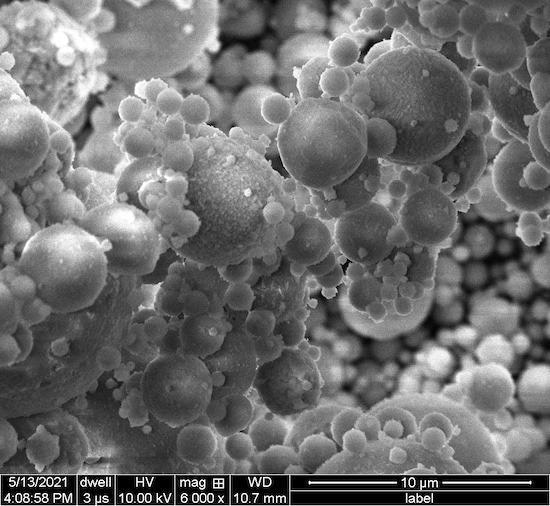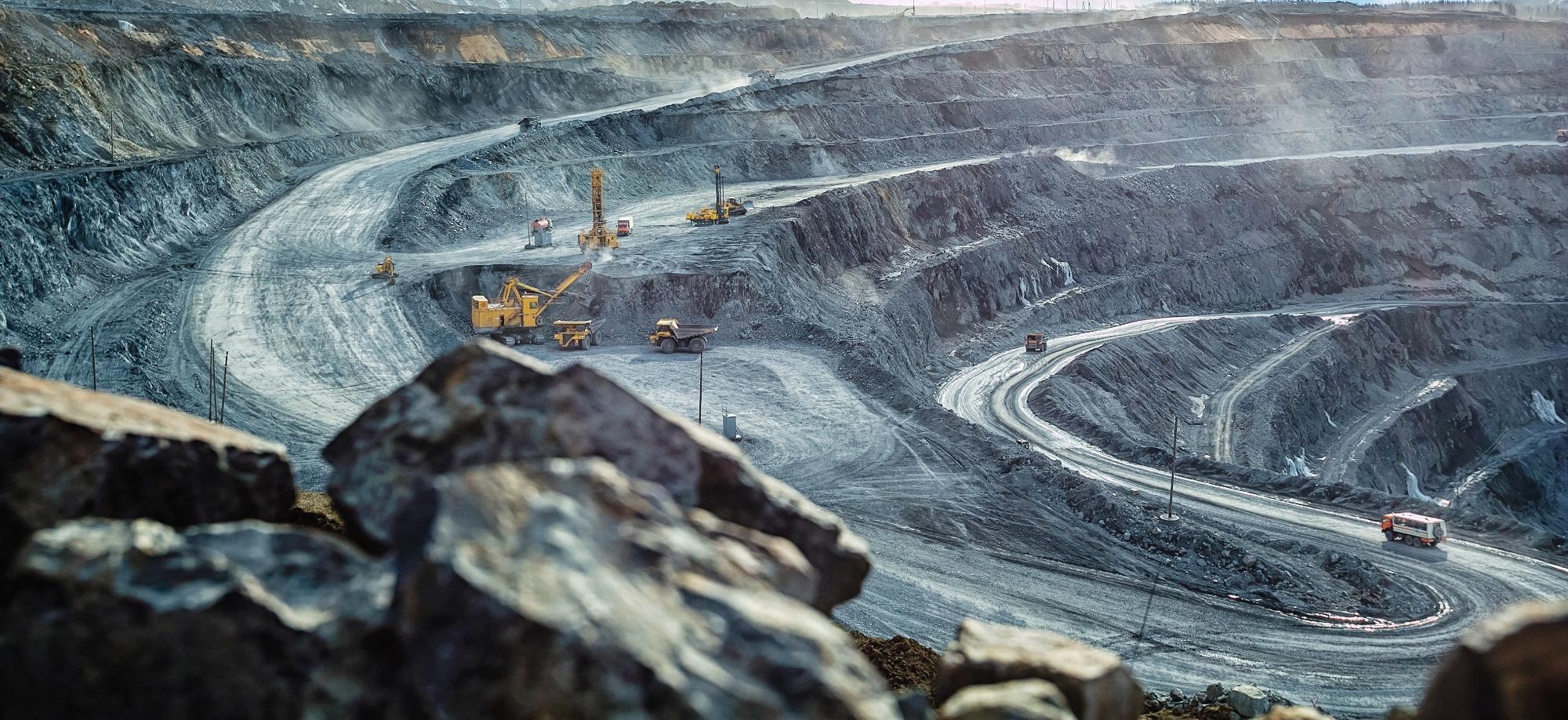AZoMining speaks with Prof. James Tour from Rice University about his novel method that has the potential to recover valuable REE from three types of waste; electronic waste, coal fly ash and bauxite residue. This novel process could offer a radical, environmentally friendly alternative to conventional REE extraction and recovery methods.
The demand for rare-earth elements (REE) is on the rise. Why do you think this is?
Due to their unusual physical and chemical properties, such as unique magnetic and optical properties, REEs have diverse applications that touch many aspects of modern life and culture.
Specific REEs are used individually or in combination to make phosphors — substances that emit luminescence — for many types of ray tubes and flat panel displays, in screens that range in size from smartphone displays to stadium scoreboards. Some REEs are used in fluorescent and LED lighting. Yttrium, europium and terbium phosphors are the red-green-blue phosphors used in many light bulbs, panels and televisions.
The glass industry is the largest consumer of REE raw materials, using them for glass polishing and as additives that provide color and special optical properties. Lanthanum makes up as much as 50 percent of digital camera lenses, including cell phone cameras.
Lanthanum-based catalysts are used to refine petroleum. Cerium-based catalysts are used in automotive catalytic converters.

Image Credit: Rice University
Magnets that employ REEs are rapidly growing in application. Neodymium-iron-boron magnets are the strongest magnets known, useful when space and weight are limiting factors. Rare-earth magnets are used in computer hard disks and CD–ROM and DVD disk drives. The spindle of a disk drive attains high stability in its spinning motion when driven by a rare-earth magnet. These magnets are also used in a variety of conventional automotive subsystems, such as power steering, electric windows, power seats and audio speakers.
Nickel-metal hydride batteries are built with lanthanum-based alloys as anodes. These battery types, when used in hybrid electric cars, contain significant amounts of lanthanum, requiring as much as 10 to 15 kilograms per electric vehicle.
Cerium, lanthanum, neodymium, and praseodymium, commonly in the form of a mixed oxide known as mischmetal, are used in steelmaking to remove impurities and in the production of special alloys.
Due to the enormous and wide-ranging applications of rare earth elements, the demand is constantly on the rise.
Extraction of REEs has major downsides. What are some of the problems with current REE extraction processes, and why is it essential to find new, innovative ways to efficiently recover these metals?
Most rare-earth ores are mined by conventional open-pit methods in which rock is broken by blasting, loaded onto trucks with large shovels, and hauled to a concentration plant. Concentrating is the physical separation of the REE-bearing minerals from all other minerals in the rock.
There are many environmental problems associated with rare earth mining. Rare earth minerals are processed primarily from ores and minerals that naturally contain uranium and thorium which are radioactive. Processing rare earth minerals involves the separation and removal of uranium and thorium, which results in TENORM wastes (technologically enhanced naturally occurring radioactive materials).
Mining for rare earth minerals also generates large volumes of toxic and radioactive material due to the co-extraction of thorium and uranium — radioactive metals which can cause problems for the environment and human health.
With the negative environmental impact, researchers are turning towards developing recycling techniques to extract rare-earth metals and other elements from industrial waste and byproducts. Can you provide an overview of how flash Joule heating can be used to recover REE from different sources of waste?
The applicable secondary wastes include coal fly ash (CFA), bauxite residue (BR, which was formerly called red mud) which results from bauxite processing for aluminum production, and electronic waste (e-waste) from consumer electronics and electric vehicles.
Taking CFA as an example, it is the by-product of coal combustion with an annual production rate of ~750 million tons worldwide. CFA has an average total REE content of ~500 ppm, which is variable based upon the geological origin of the feed coals.
We reported the ultrafast electrothermal process based on flash Joule heating (FJH) to activate the secondary wastes to improve the acid extractability of REE simply using a mild acid such as 0.1 M HCl. A 1-second pulsed voltage brings the raw materials to a temperature of ~3000 °C, leading to the thermal decomposition of the hard-to-dissolve REE phosphates in CFA into highly soluble REE oxides, and the carbothermic reduction of REE components to highly reactive REE metals.
The activation process enables the increase of REE recovery yields to ~206% for class F-type CFA (CFA-F) and ~187% for class C-type CFA (CFA-C) compared to directly leaching the raw materials with very highly concentrated acids (themselves being a nasty waste stream).
This activation strategy is feasible for various secondary wastes, as demonstrated by CFA, BR and e-waste. The rapid FJH process is scalable and highly energy-efficient with a low electrical energy consumption of 600 kWh/ton or $12 in electricity per ton, enabling a profit percentage of >10×.
Rare earth elements await in wastePlay
Video Credit: Rice University
In terms of extraction, how does your flash Joule heating process compare to traditional extraction methods?
Concentrated aqueous acid leaching of the REE minerals followed by biphasic solvent extraction has been the dominant scheme for REE mass production. Acid leaching is the most common traditional extraction method.
Taking CFA as an example, the acid extractable REE content is usually much smaller and highly dependent on the CFA feeds. For example, Taggart et al. reported the HNO3 extractability of REE ranging from 1.6% to 93.2% with a median value of ~30% from major U.S. power plants, or 7.4 ppm to 372 ppm with a median value of ~127 ppm.
REE extractability in CFA depends on the REE species, such as oxides, phosphates (churchite, xenotime, monazite, etc.), apatite, zircon and glass phases. The low REE extractabilities in most CFA resources are attributed to the large ratios of hard-to-dissolve REE species such as REE phosphates, zircon and glass phases.
Optimizing acid leaching processes could, to some extent, improve the extractability by using highly concentrated mineral acids, such as 15 M HNO3 at 85 to 90 °C for an extractability of 70%, and 12 M HCl at 85 °C for an extractability of 35 to 100%, depending on the feeds.
The use of concentrated acid, however, inevitably increases the cost of extraction and the disposal burden. Chemical or thermal pretreatment of the CFA prior to acid leaching contributes to achieving high REE recovery. For example, a total REE recovery of 88% is achieved by the NaOH hydrothermal treatment followed by acid leaching. Alkali roasting using NaOH leads to a recovery yield >90%. However, those pretreatment processes are usually lengthy and energy-intensive, which greatly reduce the profit margin and incentive.
Our process is ultrafast, highly energy-efficient and scalable.
After the FJH activation process, the HCl-leachable content of REE from the activated CFA-F is improved to ~206% over that of the CFA-F raw materials.
The recovery yield of REE from the activated CFA-F remains Y ~45% at pH 2 (or 0.01 M HCl), significantly higher than that of the CFA raw materials at the same leaching condition (Y0 ~9% at pH 2), and even under a much higher acid concentration (Y0 ~31% at pH 0).
For CFA-C, under the optimized FJH condition, the acid leachability of REE from the activated CFA-C is measured as Y ~103% using the HCl leaching procedure (1 M HCl, 85 °C), corresponding to ~187% of that from the CFA-C raw materials (Y0 ~55%). Even using a dilute acid (pH 1, or 0.1 M HCl), the recovery yield of REE from the activated CFA-C remains Y ~94%, significantly higher than that of the CFA-C raw materials (Y0 ~54%). This would render far more manageable wastewater streams.
Aside from its environmental benefits, what other advantages does this novel extraction process offer?
The new process enables a higher critical REE content. Among all the REEs, five of them (Y, Nd, Eu, Tb, and Dy) are considered most critical based on the importance to clean energy and supply risk. The percentages of HCl extractable critical REE in activated CFA-F and CFA-C are ~34% and ~26%, respectively.
The percentages of the critical REE extracted from the CFA raw materials and the activated CFA are almost identical, indicating that the FJH process shows no discriminative activation performance to different REE.
In addition, the percentages of extractable critical REE in activated BR and e-waste are ~26% and ~29%, respectively. The critical REE percentages in these wastes are considerably higher than those in conventional ores (typically <15%). For example, the world’s largest REE deposit at Bayan Obo in China has critical REE percentage <10%. The higher percentage of critical REE in wastes compared to conventional minerals represents another major advantage of the recycling scheme.

Image Credit: Shutterstock.com/ Evgeny_V
Another benefit is the low cost. We investigated the economics since the profit margin is often the sustainer of recycling.
Due to the direct sample heating feature, short duration and rapid heating/cooling rate, the FJH process is highly energy-efficient with a low electrical energy consumption of 600 kWh/ton or $12/ton, enabling a profit percentage of >10× compared to directly leaching the raw materials.
Did you come across any challenges during your research, and if so, how did you overcome them?
One of the main challenges that we came across during our research was finding a way to get our hands on the raw waste materials. Nonetheless, it was Dr. Heileen Hsu-Kim from Duke University who provided the CFA samples, and Dr. Efthymios Balomenos from MYTILINEOS who provided the BR samples.
What impact will such a novel process have on the mining industry?
Since monazite, (Ce, La, Y, Th)PO4, and xenotime, YPO4, are the main commercial sources for REE production, the proposed activation strategy could enhance REE mining, improving leachability from REE ores.
Commercially, alkaline digestion (70% NaOH, 140 to 150 °C) is the main leaching technology for monazite, or acid baking (concentrated H2SO4, 200 °C) for monazite and xenotime.
The FJH strategy, however, could be faster and less dependent on the use of concentrated bases and acids.
Existing individual elemental separation technologies, such as solvent extraction and ion exchange, can be exploited to work with the REE mixtures obtained by FJH since these are often less contaminated than those generated through traditional mining methods.
The process needs to be combined with the REE refining process in traditional mining to get pure REE.
Nowadays, solvent extraction is the most appropriate commercial technology for REE separation. The separation is generally done by primary separation and secondary separation. For the primary separation, D2EHPA is usually used to concentrate the REE from dilute solutions because of the high distribution coefficients. Subsequently, cation exchangers, solvation extractants and anion exchangers are used to separate individual REE.
Up to hundreds of stages of mixer and settler may be assembled to achieve the necessary separation and purity of REE, which have already been the routine scheme in many commercial REE extraction plants.
Our REE-containing leachates could undergo similar procedures to get the individual REE. Moreover, the extraction of REE with cation exchangers is promoted by increasing the aqueous phase pH. Here, we realized the high REE leachability at a relatively high pH (e.g., pH 2 for CFA-F, and pH 1 for CFA-C), so the as-obtained leach liquors already have high pH. This could reduce the use of chemical agents to neutralize the leachate and be beneficial for the subsequent REE separation.
Hence, existing separations technologies can be exploited to work with the REE extracts obtained through FJH. The mixtures obtained by FJH are often less cumbersome than those generated through the mining of ores, which represents another major benefit of the recycling scheme.
What are the next steps for your research?
The first major step would be to scale up the process. In our present work, the FJH process is done batch-by-batch. We presume that the FJH process could be done automatically in a continuous manner as we have demonstrated in our graphene production process.
The continuous production process consists of four steps. The mixture of CFA/CB feedstock is loaded onto the chamber on the conveyor belt. The sample is compressed to a specific resistance. The sample then undergoes the FJH reaction. Lastly, the activated CFA product is collected. This is only one possible design.
Considering the various commercially available continuous production processes and equipment, such as rolling-belt processes, our FJH process could be integrated into them for the purpose of REE recovery.
The scaling-up of the FJH process to an industrial scale for the production of graphene is currently ongoing by Universal Matter Inc., with the targeted production rate of 1 ton per day by Q3 2022, and further scaling to 100 tons per day by 2023. To date, the production rate doubles every 9 weeks.
The equipment and process designed and optimized for graphene production could be applied for the purpose of REE recovery.
At the industrial scale, alternative current (AC) is a more feasible electrical resource than the direct current (DC). According to our above analysis, optimizing the voltage is one approach to scaling up the FJH process.
In industry, the high voltage or even ultrahigh voltage up to hundreds of kV are mature technologies, which could be applied in the REE process. Hence, the FJH process has a tried route to scalability for the REE recovery.
The ongoing commercial scaling of the FJH process paves the way for future REE recovery from large-scale waste products.
The second major step is the purification of REE. For further refining, the removal of dissolved impurities, including mainly Al, Si, Fe, Ca, and Mg, in the REE-containing leachate and subsequent separation is needed.
REE separation is generally classified as primary separation (the separation of REE from other impurity elements), and secondary separation (the separation of individual REE). The presence of metal impurities in the REE-containing leachate affects the subsequent REE separation efficiency by methods such as solvent extraction and ion exchange. Hence, the impurities usually need to be removed prior to the REE separation.
About Prof. James Tour
 Prof. James Tour’s scientific research areas include nanoelectronics, graphene electronics, silicon oxide electronics, carbon nanovectors for medical applications, green carbon research for enhanced oil recovery and environmentally friendly oil and gas extraction, graphene photovoltaics, carbon supercapacitors, lithium-ion batteries, lithium metal batteries, CO2 capture, water splitting to H2 and O2, water purification, carbon nanotube and graphene synthetic modifications, graphene oxide, carbon composites, hydrogen storage on nanoengineered carbon scaffolds, and synthesis of single-molecule nanomachines which includes molecular motors and nanocars and nanomachines that can drill through cell membranes. He has also developed strategies for retarding chemical terrorist attacks. For pre-college education, Tour developed the NanoKids concept for K-12 education in nanoscale science, and also Dance Dance Revolution and Guitar Hero science packages for elementary and middle school education: SciRave (www.scirave.org) which later expanded to a Stemscopes-based SciRave. The SciRave program has risen to be the #1 most widely adopted program in Texas to complement science instruction, and it is currently used by over 450 school districts and 40,000 teachers with over 1 million student downloads.
Prof. James Tour’s scientific research areas include nanoelectronics, graphene electronics, silicon oxide electronics, carbon nanovectors for medical applications, green carbon research for enhanced oil recovery and environmentally friendly oil and gas extraction, graphene photovoltaics, carbon supercapacitors, lithium-ion batteries, lithium metal batteries, CO2 capture, water splitting to H2 and O2, water purification, carbon nanotube and graphene synthetic modifications, graphene oxide, carbon composites, hydrogen storage on nanoengineered carbon scaffolds, and synthesis of single-molecule nanomachines which includes molecular motors and nanocars and nanomachines that can drill through cell membranes. He has also developed strategies for retarding chemical terrorist attacks. For pre-college education, Tour developed the NanoKids concept for K-12 education in nanoscale science, and also Dance Dance Revolution and Guitar Hero science packages for elementary and middle school education: SciRave (www.scirave.org) which later expanded to a Stemscopes-based SciRave. The SciRave program has risen to be the #1 most widely adopted program in Texas to complement science instruction, and it is currently used by over 450 school districts and 40,000 teachers with over 1 million student downloads.
Disclaimer: The views expressed here are those of the interviewee and do not necessarily represent the views of AZoM.com Limited (T/A) AZoNetwork, the owner and operator of this website. This disclaimer forms part of the Terms and Conditions of use of this website.